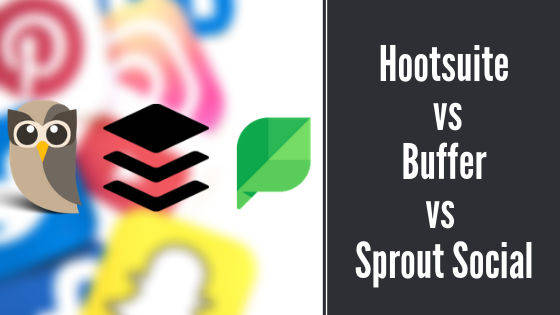Global denizens profoundly know about Microsoft PowerPoint and are well accustomed to it for their business requirements. But this is not the only story that deserves the highlight. The most staggering part is that PowerPoint, after being developed by Robert Gaskins and Dennis Austin, was initially released for Macintosh computer only. Later it became Microsoft’s first major acquisition for around $14 million. PowerPoint is a part of Microsoft Office and enjoys 95 percent of market share, per industry sources. Today, PowerPoint’s usage has become the de facto choice so much so that it’d be hard to imagine the presence of any near alternative for it. However, the case is a bit different. There are not merely ‘alternatives’ but robust options for making presentations that come with a stellar set of features.
Table of Contents
Top alternatives to PowerPoint in 2020
PowerPoint’s popularity in the market is owing to its wide array of features and a high degree of customization offered to the users. With the ability to create sterling presentations, Microsoft PowerPoint also brings a heavy wodge of cost. Although this is not a major problem for big corporations, smaller companies and freelancers find it difficult to manage it within their strict budget constraints. To them, here are the best alternatives to PowerPoint:
| Alternatives | Template library | Collaborative tool | Pricing |
| Google Slides | Yes | Yes | Free/Paid |
| Prezi | Yes | Yes | Free/Paid |
| Visme | Yes | Yes | Free/Paid |
| Haiku Desk | Yes | Yes | Free/Paid |
| Swipe | Yes | Yes | Free/Paid |
| Slidebean | Yes | Yes | Free/Paid |
| Canva | Yes | Yes | Free/Paid |
| Glisser | Yes | Yes | Free/Paid |
| Apple Keynote | Yes | Yes | Paid |
| Focusky | Yes | Yes | Free/Paid |
| DesignCap | Yes | Yes | Free |
1. Google Slides
Among the bunch of products offered by tech giant Google, Google Slides shines brilliantly. It brings a wide spectrum of features that enables you to access, edit, and create presentations on the go. The best part is that it comes with a highly optimized and responsive UI along with client applications for almost all major operating systems. With a library of templates, hundreds on fonts, and a glut of themes customize your story with every bit of detail. Most importantly, Google Slides saves all changes in real-time and offers a collaborative tool, being a part of the G Suite platform. In case, there is no internet connection for a moment, you can also work offline with most of the features. Finally, Google Slides is ‘free’ for personal use, while the business accounts cost $5 to $10.
2. Prezi
Prezi lets you build presentations with a high degree of customization. It is one such tool that offers a canvas where you can organize, manage, and view a presentation as a whole. With a pool of beautiful templates that range from marketing, business, and education, you can create highly detailed and pleasing slides. The thing that makes designing smooth and hassle-free is Prezi’s drag-and-drop feature. Although being is a cloud-based service, it can also be used offline on the desktop app. On top of that, users also get collaborative tools enabling lag-free teamwork.
3. Visme
“Not just another boring Presentation Software” claims Visme. Indeed, a bold statement, but it’s actually true. Visme brings you intuitive design tools along with robust presentation features that build a fertile platform to create alluring presentations. You can choose a template from the existing library or can create your own for pinpoint customization. Graphics, charts, data widgets, and what-not, Visme offers you a ton of designing modules that gives your presentation a vivid touch.
4. Haiku Deck
Haiku Deck is probably the best presentation making tool for laypersons. Unlike other software of this kind, it offers a user-friendly interface for beginners. The dashboard is clean and clutter-free so that you can focus on a single idea at a time. Doing this, it doesn’t compromise with cardinal elements of a presentation building tool. You can choose from a range of fonts, image filters, layouts, and templates to innovate the one you have in your head.
5. Swipe
Swipe is one of those rare presentations making software in the market that underpins quite an unconventional cluster of features. The first being its ability to manage social polls in the meantime and tracking engagement patterns. It shows you several insights such as statistics of when, where, and how much your presentation was viewed along with the viewing duration of each slide. Besides these unique tools, it does retain all most of the key features that make a presentation builder.
6. DesignCap Presentation Maker
If you’re looking for an easy-to-use online tool for making presentations, then you need to give DesignCap Presentation Maker a try. It comes with a slew of templates neatly categorized into categories such as business, marketing, etc., offer the ability to add stock images, vectors, clip-art images, and more to make an attractive presentation. The tool also has powerful editing options. And the best part about using it? DesignCap is offering all these features for free and even lets you download the presentation so that you could share it later.
Bottomline
Microsoft Powerpoint is undoubtedly the industry-leading presentation maker. This often curtains some of the feature-packed and underdogs of the segment. Having a fair bit of knowledge about the availability of software of this kind helps you to choose the perfect one for your needs. This also helps in saving a chunk of money, which would have been wasted otherwise for the features alien to your knowledge.






